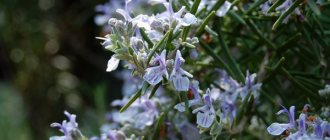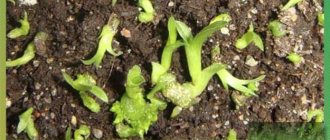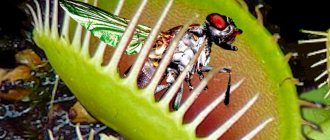When to sow seeds for seedlings?
The timing of sowing depends on when you want the eustoma to bloom. Flowering time depends on the variety, seed quality, growing conditions at home and the climate in which your garden plot is located.
Most modern hybrid varieties of lisianthus bloom 150-180 days after sowing the seeds and 70-100 days after transplanting the seedlings into open ground. At the same time, in the south of Russia a little earlier than in colder regions.
Approximate sowing dates
- North-West (Leningrad region and neighboring), Moscow region (Moscow region and neighboring), Central Russia (Voronezh, Lipetsk and neighboring regions). From November to the end of January.
- South of Russia (Krasnodar region). From December to early March.
- Volga region, Urals and Siberia. Dear gardeners, we advise you to focus on November and December, since your climatic conditions can vary significantly even within the same region. With the accumulation of personal experience, you will find your optimal planting dates.
Attention! On seed packaging, manufacturers themselves often advise sowing seeds in February-March. However, in practice, the plant often does not have time to bloom already in the conditions of the Moscow region.
Therefore, many experienced flower growers from the Moscow region and the North-West prefer to plant lisianthus seeds on seedlings from early December to early January so that they have time to bloom.
Favorable days in 2022
If you prefer to coordinate your work with plants with the lunar calendar, then we have recorded favorable days for sowing eustoma seeds and replanting them in open ground.
- February: 6-8, 11-17, 21-25.
- March: 12-17, 19-20.
- April: 6-8, 11-13, 15-17, 29.
- May: 8-17, 21-23, 26-28.
- June: 1, 2, 5, 6, 9-13, 20-26.
- July: 8-10.
- November: 6-8, 13-18, 24, 25.
- December: 4-5, 17-19, 27, 28.
We also recommend that you read:
- FAVORABLE DAYS FOR SOUDING AND PLANTING ACCORDING TO THE LUNAR CALENDAR IN 2022 – TABLE!
- LUNAR CALENDAR OF TRANSPLANTING INDOOR FLOWERS FOR 2019!
You can find out more about planting dates in a separate material:
WHEN IS IT BETTER TO SOW EUSTOMA SEEDS FOR SEEDLINGS?
Sowing in home soil in cups or containers
To plant in cups, it is important to take care of purchasing high-quality soil or prepare it at home.
Grow bell seedlings without making mistakes: 5 useful tips
For Eustoma, you need light soil, with good thermal conductivity, so that it retains moisture for a long time, but at the same time there is no stagnation of water.
Planting stages
- To prepare you will need:
- high-moor peat – 1 cup;
- vermiculite – 1 cup;
- perlite – 0.5 cups;
- soil from the garden - 1 cup;
- river sand - 0.5 cups.
- It is better to steam soil from the garden, river sand and high-moor peat in the oven before use to reduce the likelihood of diseases in plants and pests. Mix everything in a separate container.
- Transparent cups with a lid, or you can take 200-gram cups for the soil, and instead of a lid on it, use 100-gram cups. Make several holes at the bottom to drain excess liquid.
- Place a layer of fine expanded clay on the bottom of the container. Pour the prepared soil on top, which should be thoroughly shed with warm water.
- When the excess liquid has drained, plant 2-3 seeds in each container.
- To cover with a lid.
Before the shoots appear, the lid is not opened only if the soil is dry. When the first shoots appear, you will need to ventilate the mini-greenhouse daily.
How to sow correctly?
We recommend sowing eustoma seedlings in the ground or in peat or coconut tablets. It is better to sow seeds on toilet paper or in a “snail” as an experiment rather than to gain first experience.
Priming
This is the cheapest option for growing seedlings, since ready-made store-bought soil is cheaper than tablets. Perfect for those who plan to plant not only eustoma in the spring.
Soil composition: any universal soil for indoor plants or seedlings with pH 5.5-6.5 based on high-moor peat and sand – 2:1. 2nd option: turf (garden) soil and sand (agroperlite/vermiculite) – 1:1.
Step-by-step instruction
- Place a 3-4 cm layer of moist soil mixture at the bottom of a transparent container (seedling cassette).
- Using the back of a pencil (pen, brush), make grooves 2-3 mm deep. The distance between rows is 4-5 cm.
- Place the granules along the grooves so that there is 3-4 cm between them. After placing all the seeds, spray them on top with a spray bottle.
- Cover the container with film, glass or a transparent lid and place in a bright place with an air temperature of 20-22 °C.
Sterilization
If you are planting in garden soil, we recommend sterilizing it (heating, steaming) or spilling it with Fitosporin-M (0.5 g (knife tip) / liter of water) 1-2 days before planting. This will reduce the risk of bacterial and fungal diseases.
You can read about soil sterilization here:
SOIL MIX FOR HOUSE PLANTS – COMPONENTS OVERVIEW!
Peat or coconut tablets
The advantages of sowing in tablets are simplicity and ease, since there is no need to prepare the substrate and look for its components. In addition, special “greenhouses” are now sold with peat tablets included, which is very convenient for the first time.
This method is great for gardeners who want to grow a small number of plants (up to 20).
Step-by-step instruction
- Place peat tablets in a container and fill with warm water to 1/3 of their size. After they have absorbed moisture, pour water directly into them little by little until they are completely swollen.
- After the tablets have completely swollen (3-5 minutes), wait until they cool to room temperature. Then spread the eustoma seeds on each tablet.
- Spray granules and peat tablets with a spray bottle.
- Cover the top of the greenhouse with a transparent lid, film or glass. Move it to a bright and warm place.
Eustoma seeds on peat tablets
Tips
- If desired, you can plant several seeds at the same time in one coconut or peat tablet. Some experienced gardeners sow five granules at once, but for beginners it’s better to put 1-2 pieces. If you want to save money, we recommend cutting the already swollen tablet crosswise into two halves with a blade and placing the seeds on the cut part.
- If the seeds in some peat or coconut tablets have not sprouted, then do not rush to part with them. You can replant seeds of any crops in them, just fill them with warm water again.
Germination conditions and tips
Do not bury eustoma seeds; they should be on top of the soil, as they need light for better germination. At the same time, they do not have to be artificially illuminated, but if desired, they can be illuminated from three to 24 hours a day.
Keep the soil mixture slightly moist. To do this, spray the seeds daily, and once every 1-3 days in the morning, water the soil with a syringe or bulb.
Seeds germinate best at a soil temperature of 20-22 °C. Both higher and lower temperatures reduce germination.
Seed coat
Lisianthus seeds are covered with a special shell. It is best for it to dissolve when sprayed immediately after sowing or in the first 3-4 days. If this does not happen, then destroy it yourself, for example, with a toothpick, so that it does not prevent the seeds from germinating.
We recommend this method: immediately after sowing, place a small piece of aloe stem, cut crosswise, on the granule. Aloe juice is a natural growth stimulant, and it dissolves the granule shell well.
Adviсe
- To make it easier to maintain high humidity of the air and substrate, you can place a 1 cm layer of vermiculite on the bottom of the planting container with soil mixture or tablets (peat, coconut fiber).
- If you sow several varieties of eustoma, then in order not to forget where each one is, prepare different “beacons” in advance, on which write the number or name.
- The granules are quite small, so you can sow them using tweezers or a toothpick with one end dipped in water.
How to increase seed germination and when do they germinate?
Good seed germination rate of 70% and above. The percentage of germination is seriously affected by their freshness. Seeds older than two years under optimal germination conditions rarely show germination rates above 60%.
You can increase the germination percentage if you use growth stimulants, for example: aloe juice, potassium humates, Epin, succinic acid.
- Spill the soil or soak peat or coconut tablets for 1-2 hours in the following solution: chlorella suspension + water – 1:4.
- Or in this solution: two drops of “HB 101” and one capsule of “Energen Aqua” per liter of water. In addition to soaking and watering, it is recommended to spray the seeds with this solution immediately after sowing and every day until they germinate.
Pre-cooling
The guide to growing eustoma from world-famous seeds recommends pre-cooling.
We translated it into Russian as follows: “After you have moistened the soil, sown and sprinkled the seeds, place the container in a dark place with an air temperature of 8-10 °C for 21 days. This will help speed up germination and ensure more uniform germination.”
How many days do the seeds take to germinate?
Under optimal conditions, flower seeds begin to germinate en masse on days 9-10, and in general after 12-16 days. With the use of growth stimulants and in ideal conditions, the first shoots can appear even on days 6-7.
For more information on different sowing methods, see here:
HOW TO SOOW EUSTOMA CORRECTLY?
How to care for Eustoma seedlings, what tricks?
There are several nuances in caring for Eustoma seedlings.
Eustoma seeds have sprouted, what to do next?
2-3 weeks after sowing, sprouts will appear above the soil surface. Now we need to monitor and care for the seedlings.
The temperature of the crops is slightly reduced. Up to approximately 20 - 22 degrees. At the same time, seedlings need a lot of light, so do not move the containers deeper into the room.
Eustoma seedlings
During the period of growth and development of seedlings, it is important to maintain an increased level of humidity. Don't forget to water the seedlings. If you have powerful central heating batteries, place saucers of water next to Eustoma.
How to feed Eustoma seedlings
In order for seedlings to grow better, they can be fed with standard growth stimulants. The most popular products: Epin, Kornevin, Zircon. There is no need to feed Eustoma with “real” fertilizers before picking. The plant has not yet developed a root system to absorb all the nutrients.
But after a week or a week and a half after picking, you can apply mineral supplements. The most effective is, perhaps, the well-known Potassium Humate.
Further feeding is carried out at intervals of 7 - 10 days. At this stage, you need to give preference to nitrogen-containing fertilizers, since the flower needs to gain green mass.
Rules for picking Eustoma
After 1.5 - 2 months, the seedlings will grow and have real leaves. After the appearance of the 4th leaf, the seedlings must be picked. In other words, transplant from a common container into separate ones (for example, plastic or peat cups).
To make it easy to remove the seedlings, use tweezers or a wooden stick. The soil also needs to be watered first. Then each seedling is placed in its own cup and also watered.
REFERENCE. Picking is needed to transplant Eustoma into a deeper container where its root system can develop.
Eustoma pinching
Pinching is an important procedure that Eustoma absolutely needs. It is carried out after the plant has 6 true leaves. The top of the seedling is simply pinched, thereby stimulating the formation of additional side shoots. In the future, these stems will have their own flower stalks, and the flowering of Eustoma will be lush and abundant.
Pinching the tops
Shoots have appeared, what to do?
Eustoma shoots appear rather slowly. At first you see a small green dot, which then resembles an arc. The future stem gradually straightens and after 2-3 days tiny leaves are already visible.
- Seedlings need the maximum amount of light, so place the “greenhouse” in the brightest place on the windowsill or keep it under a lamp. Daylight hours should last at least 13-16 hours.
- Seedlings need to be grown at a temperature of 18-24 °C. At the same time, at night it should not rise above 22 °C and fall below 15 °C. Try to find a balance between the radiator and the window. If the “greenhouse” is on a windowsill, then be sure to place a blanket or blanket under its bottom and on the side of the window.
- For the first 3-4 days after massive seed germination, ventilate the container for 10-20 minutes in the morning and evening. Every morning, lightly moisten the soil between shoots using a syringe with a needle.
- After the formation of the first pair of leaves (3-5th day) for all seedlings, the container no longer needs to be closed. However, if not all the seeds have sprouted or it’s cold at night, then keep the “greenhouse” open from morning until evening, and cover it with a lid at night so that they can still germinate. This regime can last up to 10-15 days.
Ventilation promotes better adaptation of seedlings to room conditions and helps prevent the appearance of rot from excessively high air humidity.
Eustoma shoots are 7 days old.
Growing conditions: lighting, temperature, soil
In order to grow eustoma from seeds at home, it is necessary to comply with the growing conditions. Namely: lighting, air and soil temperature, air humidity level and substrate.
Lighting
Immediately after emergence, it is necessary to ensure a minimum of 13-16 hours of daylight. Therefore, you need to resort to artificial lighting.
Find out which lamp to choose here: LAMPS FOR LIGHTING PLANTS – TYPES AND TIPS!
Soil and air temperature
The optimal soil temperature for successfully growing seedlings is 13-23 °C. If the air temperature drops below 15 °C at night, the seedlings stop growing.
And if it is above 22 °C, then there is a high risk of the formation of a rosette of leaves and the flower will begin to develop like a biennial plant, i.e. will bloom next year.
Priming
During the first picking, lisianthus needs to be transplanted into more nutritious soil than the one in which the seeds were sown. Garden stores mainly sell peat-based soils (70-80%) with a similar composition.
Therefore, regardless of its name (“Universal”, “For seedlings”, etc.), the main condition for purchase will be a pH level close to 6.0-6.8. The packaging usually indicates pH 5.5-6.5.
Then, if possible, add 1/3 of your garden soil or turf soil, if you find it on sale, to the purchased peat-based soil.
To prepare your own soil mixture, we recommend the following composition: high-moor peat, humus (leaf soil, compost), garden soil and sand – 2:1:1:0.5.
WE ADVISE YOU TO READ:
- WHAT IS THE BEST SOIL TO USE FOR SEEDLINGS?
Examples of different soils with similar composition and pH levels
Types of eustoma, which eustoma to plant?
There are many varieties of this flower that have been bred by breeders. Let's try to figure out which one is right for you to grow.
Tall varieties
These varieties are grown from seed to cut buds for bouquets or decoration.
Among the most popular varieties that are most often sown: Aurora, Echo, Flamenco.
The shoots of these flowers grow no lower than half a meter (usually 100 cm and above). They are distinguished by large buds.
Low growing varieties
They reach a maximum height of a couple of tens of centimeters. These varieties are grown for the purpose of decorating the garden and surrounding area.
Most often, Russian flower growers grow the following varieties: Mermaid, Bell, Fidelity, etc.
Watering seedlings
The soil mixture should be slightly moist most of the time. It is better to water eustoma seedlings with a small amount of water, since excessive watering leads to the development of blackleg and its death.
Water the seedlings after the top layer of soil has dried, about once every 2-4 days, and if they grow in peat or coconut tablets, then once every 1-2 days. The frequency of watering is mainly affected by plant size, light level, air temperature and substrate composition.
Before the pick
After the seedlings appear and before the first picking, you can only water the soil around the seedlings to avoid rotting of the stems.
After the pick
- After the first picking (seedlings take 40-60 days) and before transplanting into open ground, water the seedlings only at the root. Drops of water should not fall on the leaves and stem of the plant.
- For watering, use a syringe with a needle or a rubber bulb to avoid washing out the roots.
- It is better to water the seedlings in the first half of the day so that the flower has time to “drink” enough water.
- Water the seedlings with settled water at room temperature.
REFRESH YOUR KNOWLEDGE:
- WHAT WATER IS BETTER TO WATER PLANTS?
- METHODS OF WATERING PLANTS - ADVANTAGES AND DISADVANTAGES!
Feeding eustoma
After the seedlings are 10-15 days old, you can begin feeding. We recommend doing it no more than once a week, but preferably once every 14-18 days.
Before the first pick
In this phase of development, plants actively grow their root system. To do this, they first need a sufficient amount of phosphorus, and for its absorption, potassium and nitrogen.
Therefore, use any complex or “seedling” fertilizer that contains more phosphorus and potassium than nitrogen.
- “Weaving” for seedlings (Nitrogen (N) – 12, Phosphorus (P) – 37, Potassium (K) – 16). 16-20 rubles for 20 g stick.
- “Living force” “Healthy seedlings” (N – 2, P – 11, K – 12, + humic acids). 130 rubles for 500 ml.
- “Fertika Lux” for vegetables and seedlings (N – 1.6, P – 2.1, K – 2.7). 135 rubles/250 ml.
Attention! Before the first picking, fertilize with 30-50% of the recommended dose.
After the pick
After the first transplant, the eustoma can be fed with the same fertilizer for seedlings or a complex fertilizer, or you can take other options with a higher nitrogen content.
Fertilizers based on vermicompost are excellent, for example “Universal biohumus” (N – 6, P – 5, K – 4. 1 tsp per 2 liters of water).
If desired, you can supplement the feeding with growth stimulants: “NV-101” (2 drops per liter of water), “Epin” (5-6 drops per 500 ml of water with 2-3 citric acid crystals) or “Zircon” (3 drops per 200 ml of water). ml of water).
In order for the seedlings to take root better after picking, water them with “Kornevin” (20-30 rubles, 5 g packet per 5 liters of water).
Calcium nitrate
To maximize root development, prevent the appearance of root rot and increase resistance to various bacteria, it is necessary to use calcium nitrate specifically for eustoma.
Application. Stock solution – 1 tbsp. spoon per liter of water. Then 2 teaspoons of mother liquor per liter of water. After watering with plain water, feed the seedlings with the resulting solution once a month.
Adviсe
When using root (watering at the root) and foliar (spraying) fertilizers, we recommend alternating them to enhance the effect.
Attention! To avoid burning the roots with chemicals, first water the flowers with just water, and then with a solution with fertilizers.
WE RECOMMEND READING:
- HOW TO FEED CORRECTLY? SECRETS OF FLOWER GROWERS!
- OVERVIEW OF TYPES OF FERTILIZERS AND TIPS FOR APPLICATION!
- WHAT ARE THE BEST FOLK REMEDIES TO FEED PLANTS?
Sowing seeds
You have to wait a long time for Eustoma to bloom, from 5 to 7 months, since its growing season is too long. Therefore, seeds begin to be sown from the beginning of December (flowering will begin in June), and sowing can be continued until January-February (flowering in July-August).
Eustoma's seeds are very small, but are almost always sold coated. The shell that covers the seeds contains nutrients, and such seeds no longer need to be processed; you can immediately begin planting.
If the seeds are collected manually, they should be pickled in a dark solution of potassium permanganate for 30 minutes or in an Epin solution (1 drop per 100 ml of water) for 6 hours. Next, the seeds should be dried and sown.
Before planting, the soil must be well watered. If you plant seeds in peat tablets, then first you need to prepare them: fill them with hot water, and then squeeze them out, removing excess moisture.
Eustoma seeds are sown superficially, never sprinkling soil on top. You can spray a little water from a spray bottle to destroy the protective shell of the seeds. After this, you need to place the container in a plastic bag to create a better microclimate.
Picking and pinching
Timely picking ensures the correct development of eustoma. Late transplantation is fraught with worse rooting and slower growth.
When is the best time to dive?
The right moment for picking is not difficult to find out: the plant already has two pairs of leaves, and it itself is already about 1.5-2 cm in height or the roots are already visible at the bottom of the container. If you sowed in peat or coconut tablets, then immediately dive as soon as you see the roots.
The time for the first picking usually occurs 40-60 days after emergence.
How many times should you dive?
The sowing method you choose and the pattern of growing seedlings determines the number of picks. The classic scheme for growing eustoma from seeds: the first picking in a 200 ml glass - after two to three months in a 500 ml glass - transplantation into open ground.
This scheme can be simplified and planted immediately in a 500 ml glass, a pot of 8-12 cm in diameter or large cassettes for seedlings.
Picking step by step
Eustoma transplantation should be carried out exclusively by transshipment in order to avoid damage to the delicate roots.
- Pour the prepared soil into picking containers and then compact it. You need to pour in such an amount of soil that there is room in the glass for a flower with a lump of earth.
- Scoop the seedling with a spoon or spatula at a sufficient distance from the stem so as not to damage the roots.
- Place the plant with a ball of soil just below the top edge of the pot. Fill the voids along the edge of the container with soil mixture, compacting it little by little.
- Water the seedlings with a small amount of water. If the soil has noticeably subsided, add it and water again. If you have Kornevin, you can water it with it.
- For the next 5-6 days, protect the flower from direct sunlight and keep the substrate slightly moist so that it takes root better.
You can read more in this article:
SUBTLETS OF EUSTOMA PICKING!
Pinching
Tall varieties of eustoma need to be pinched so that it branches better and a larger number of peduncles are formed. Accordingly, you will get more massive flowering.
You need to pinch the top of the flower after 3-4 pairs of leaves have formed.
- Attention! Low-growing varieties of lisianthus (height 20-30 cm, as a rule, grown as indoor flowers) do not need to be pinched. They have excellent bushiness in their genes.
Transplanting eustoma into larger diameter pots
Considering that eustoma has quite powerful roots, in mid-March it is necessary to transfer the seedlings into pots 9 cm wide.
Pour about 2 cm of expanded clay drainage into the pots, then a 4-5 cm layer of soil.
Carefully, so that the soil does not crumble, remove the eustoma seedlings with a lump from the small pot and place it in the center of the large pot.
Fill the remaining voids with soil, gradually compacting along the walls of the pot. Do not deepen or expose the root collar. Water the eustoma seedlings after transplanting.











